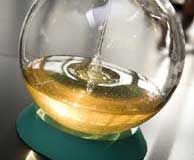
Novomer Inc., a sustainable materials company pioneering a family of high-performance polymers and other chemicals from renewable feedstocks such as carbon dioxide (CO2), has completed the world's first large-scale manufacturing run of polypropylene carbonate (PPC) polyol, producing over seven tonnes of finished product.
The PPC polyol was scaled up and produced with Albemarle at their manufacturing facility in Orangeburg, South Carolina, using existing Albemarle equipment which was modified for PPC polyol production.
Albemarle, headquartered in Baton Rouge in Louisiana, manufactures and markets highly-engineered specialty chemicals.
The work was completed in conjunction with Novomer's three-year, US$25 million US Department of Energy (DOE) award.
The recently produced material, a 1,000 molecular weight PPC diol, will be used to accelerate product qualification and adoption in a wide range of conventional polyurethane applications including flexible and rigid foams, adhesives and sealants, coatings, and elastomers. Novomer is currently working closely with several major companies in various segments of the polyurethanes industry and this material will enable commercial scale testing of Novomer polyol.
Novomer polyols are designed to replace conventional petroleum-based polyether, polyester, and polycarbonate polyols. The polyols are based on the co-polymerisation of carbon dioxide (CO2) and epoxides and the resulting products contain more than 40% CO2 by weight. The use of waste CO2 as a significant raw material yields a product with an extremely low carbon footprint. In addition, since waste CO2 is significantly lower in cost than conventional petroleum-based raw materials, Novomer polyol manufacturing costs will be favourable compared to conventional polyols when produced at full commercial scale.
In terms of performance, Novomer's PPC polyol has a unique polycarbonate backbone, which increases the strength and durability of polyurethane products. Incorporating these new polyols into existing formulations yields foams with higher tensile, tear strength, and load bearing capacity; adhesives and coatings with improved adhesion, cohesive strength, and weatherabilty; and elastomers with greater tensile and flexural strength.
(PRA)









